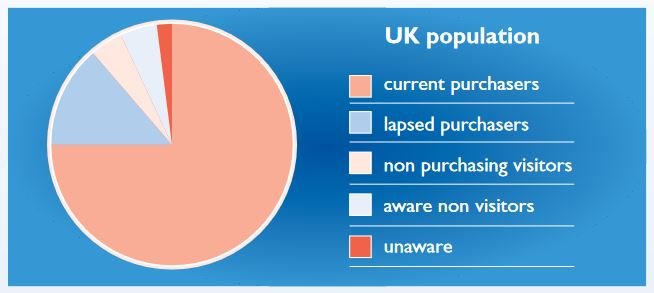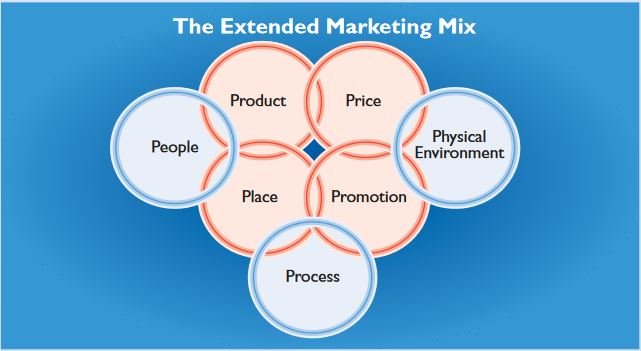Changing the culture at Argos
A company’s culture is based on the values and beliefs that are shared across the organisation. It is challenging yet essential to ensure the organisation’s culture reflects its strategy and focus on the customer. A key element of the new approach has been to change the corporate culture at Argos and build an environment within the firm that values:
- customer service which focuses on providing an experience that is enjoyable and friendly as well as efficient
- teamwork, because this leads to greater cooperation and the sharing of best practice
- taking ownership of decisions so that managers solve problems themselves rather than pass them on to others
- respecting each other so that everyone feels they can contribute
- having the competitive will to win so that everyone is aiming to improve and succeed.

The commitment of Argos employees to these values seems extremely high: in its 2003 Speak Out employee survey, the company found that among its employees:
- 82% believe the company wants to beat its competitors
- 74% believe strong teamwork is a major contributor to the Argo’s performance
- 77% believe the business is customer focused.
At the heart of these changes is a culture of effective communication through which employees know what they are supposed to be doing and what the business as a whole is aiming to achieve.
Around 80% of Argos employees say they clearly understand the company’s goals and objectives and 89% say they know what is expected of them in their job. These are comparatively high figures; many companies would struggle to match them but Argos wants to continue improving them.
Building a team
Argos also continues to work at building what it calls its ’employer brand’ – a clear set of values representing the attitudes and beliefs of its employees. In 2003, after consultations with staff, these values were stated as:
- change makes us better and more successful
- we are impatient to win
- as much opportunity as you can handle
- where teams work.
The new management team have managed to recreate an Argo’s culture that:
- believes in winning
- believes that change is important and necessary
- seeks new opportunities
- encourages co-operation.

Values such as these have played a vital part in improving the firm’s competitiveness through innovation and through working effectively together.
To achieve such a cultural change, Argos provides on the job and off the job training, career development opportunities and appropriate rewards for good performance. For example, new employees take intranet-based training tests on key areas such as customer service and shopping at Argos and every employee’s progress is tracked through the different training modules.
New employees are assigned a ‘buddy’ who helps them to become familiar with the business. After their induction training, all employees are set performance objectives. Their performance is then monitored on a regular basis and discussed in appraisal sessions with their line managers.
Argos also provides opportunities for individuals to progress within the business; over 80% of all Argos retail management appointments are internal. Performance is rewarded not just through competitive basic pay levels but also through numerous bonus and incentive schemes that are used to encourage high levels of sales and good customer service. The company has widespread recognition schemes such as Simply Thank You and MAD (Made A Difference) to acknowledge employee performance and to motivate staff.
In 2003, the company’s work was formally recognised by Retail Week magazine when the company won the ‘Retailer of the Year’ award.
The marketing mix at Argos
As well as changing the culture at Argos, management appreciated the need to change the extended marketing mix to improve the customer experience. Argos has always been associated with ‘low prices, more choice, less hassle’. The management team wanted to build on these values and develop the marketing mix to boost the company’s sales and profits.
The product
Market research following the 1998 takeover showed that the Argos brand was seen as boring and stuffy. Argos set about modernising the brand to give it greater appeal. This included a new brand strapline -“Brighter Shopping”- and a new logo.
The company has also widened its product range; by 2002 it offered twice as many products as four years earlier. In 2002 alone it added an extra 2,400 product lines, taking the total to nearly 12,000. In particular, Argos has moved further into furniture and white goods such as fridges as well as services such as pet insurance.
Given that the brand is so well known and that over 70% of the population shop at Argos, the company’s management thinks the best strategy to boost revenue is to convince existing customers to buy more rather than work specifically at attracting new customers. It aims to do this, in part, by offering a wider choice.
Promotion

The company has used advertising to appeal to its different market segments. Argos segments its market not just in terms of traditional demographics (e.g. age and gender) but also in terms of people’s brand awareness. Argos divides its customers into ‘the don’t get its’ (who use Argos only occasionally) and ‘the get its’ (who regularly shop at Argos). The latest advertising campaign has two characters – an ageing rock star (a ‘don’t get it’) and his personal assistant (a ‘get it’). In the course of a series of adverts, the ‘get it’ gradually introduces the ‘don’t get it’ to the wide range of Argos products and solves all his purchasing problems.
The campaign is designed to promote a more modern image for the business, to attract the ‘don’t get its’ to spend more and to reinforce the loyalty of the ‘get its’. In 2003 the television adverts won Retail Week’s Marketing Campaign of the Year award and the ‘Retail’ category in the Marketing Week Effectiveness Awards 2003.
Place (distribution)
Argos continues to revamp existing and open new stores, making its products more accessible to customers throughout the UK. Between 2002 and 2003 the company opened a further 36 outlets; its long run target is to have around 600 stores. Its catalogue is a key part of the Argos distribution system and can be found in 70% of British households.
Price
Argos’s pricing strategy focuses on providing low prices. The management team has strengthened this approach e.g. with low price DVDs and CDs. The company works closely with suppliers to keep costs, and therefore prices, as low as possible.

Extended marketing mix
People
As shown earlier, Argos places great emphasis on training staff and ensuring they provide good customer service. If staff are friendly, know what they are talking about and are eager to serve their customers this can provide an important competitive advantage in retail.
Process (i.e. the buying process)
In 2002 Argos introduced ‘Text and Take Home’ which allows potential buyers to text at any time to discover if a product is available in their local store and, if they wish, reserve it to pick up later. The company expects 700,000 users per year for this service. Over 40 million text messages are sent in the UK every day so the potential is huge and Argos is tapping into this growth area. Alongside the Argos website and telephone service, ‘Text and Take Home’ is designed to make buying from the company more convenient.

Argos has also improved the in-store buying experience by introducing ‘Quick Pay’- a system that enables customers in store to check availability, order and pay for goods themselves by credit or debit card, thereby avoiding the tills. This service makes shopping easier for customers and reduces the queues in-store in busy periods; it currently accounts for 6% of all Argos sales.
Given the growth of Internet shopping, where customers can buy direct at any time of the day or night, Argos has responded by being technologically innovative to ensure the process of buying its products is as easy as possible. The success of these developments has been recognised with many top awards.
Physical environment
In retailing, the look and layout of stores can be an important factor in attracting customers. Argos has invested heavily in store improvements to ensure customers are attracted by their shops and walk in. Between 2002 and 2003 Argos refurbished over 100 of its stores.
Conclusion
When Argos was acquired by GUS in 1998, sales and profits were disappointing. Since then growth has been excellent. Annual sales grew by 13% and profits by 17% from 2002 to 2003 alone, significantly outperforming the market as a whole.

This has been a remarkable turnaround for the business, brought about by instilling insights and enthusiasm into employees, keeping the brand modern with strong identifiable values, making the service more convenient, and building a culture within the firm that wants to win.
Changes to the Argos culture and in its marketing mix have revitalised the brand and boosted its market share. Its success at motivating its staff, developing an effective advertising campaign and providing more ways for customers to buy the firm’s products have all been recognised by industry awards highlighting the remarkable recovery of Argos in recent years.
